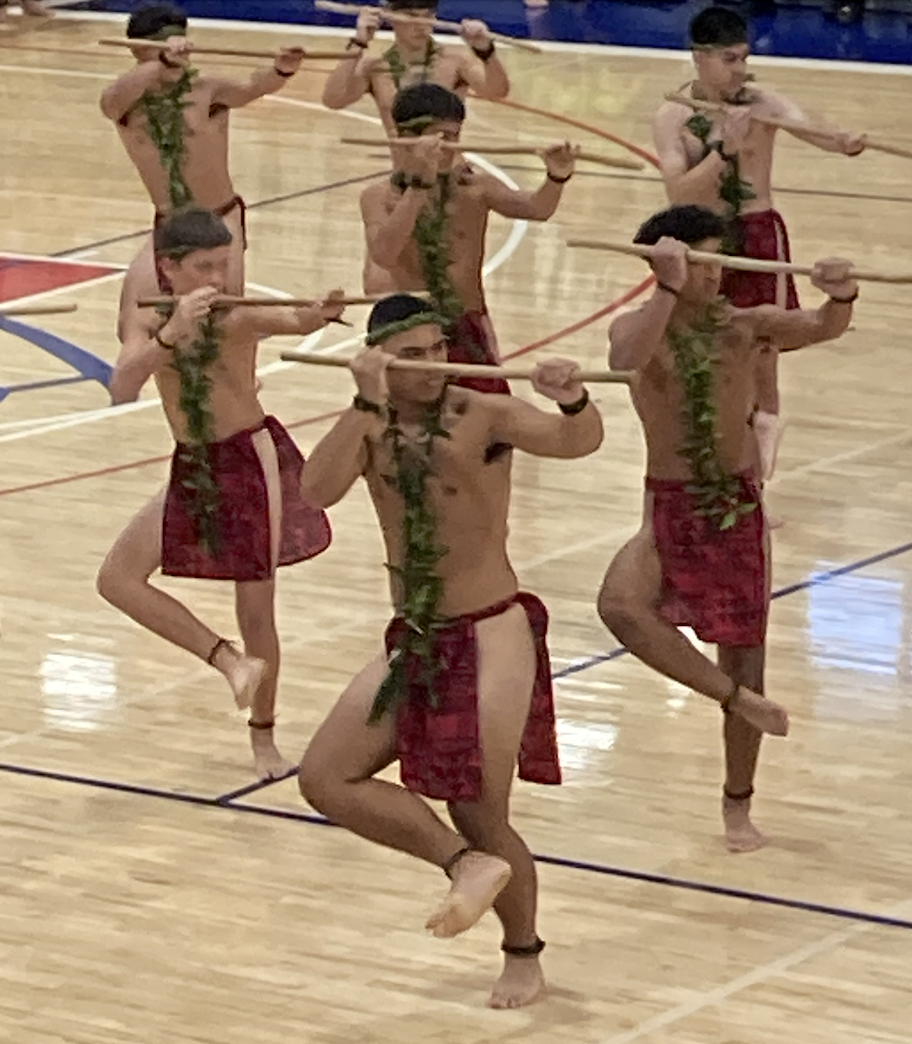Palolo Stream has become a new educational site for students from Saint Louis. The young men from the school have been working hard to restore the stream to its original state.
Before visiting the site, the students must learn a few basic things. Indigenous Science and Forensic Science Teacher Alyssa Jackson, explained the learning process. “The students learn to identify the specific needs of different plants,” says Jackson. “They learn about the amount of sunlight, water, and soil components required and how to care for plants in an aquaponic system.”
Learning outside the classroom offers a unique experience and allows students to learn different things. “Learning hands-on differs from learning through slideshows and textbooks,” explains Jackson. “Therefore, it is a unique and separate learning experience from the classroom.”
Jackson’s ultimate objective for the stream is that students can rely on it as a secure and hygienic platform for interaction. She envisions that its quality condition will be maintained by the efforts of teachers and students who have used it before.
Palolo Stream is a natural habitat for a diverse range of native animals and plants. Some animal species in the area include the ‘O’opu, a native goby, and the native heron. Additionally, several types of plants thrive in the region, including Pohinahina, Loulu palm, and Ti leaves.
Students also learn about removing invasive fish species and what techniques are used to do so. “We use two different methods, one we fish them out with bamboo poles and the other method is with the PaePae with the nets, which is an ancient Hawaiian technique used to coral fish with nets,” notes Indigenous Science teacher John Watase. “It is extremely beneficial to our stream and all the streams in Hawaii to remove invasive species, our first goal is to remove the invasive species and then focus on planting native plants to restore the forest. However, we also need to ensure that we use plants that are suitable for the area so that our efforts are not wasted,” explains Watase.
The ultimate objective of the Palolo Stream project is to restore the stream to its original state. According to Watase, he believes that anything is possible with God. Despite the general perception that restoring the stream to its former glory is difficult, Watase thinks that if we persevere and keep striving toward our goal, we can achieve it.
Palolo Stream is a significant place for Hawaiians, housing various plants, animals, artifacts, and Mo’olelo stories. Students have found Ulu Maika stones and petroglyphs, and the stream contains sacred shapes significant in Hawaiian mythology, as per Principal Tim Losbanos.
A mo’olelo or story relating to Palolo Stream has to deal with the Hawaiian goddess Hi’iakaikapoliopele. In this story, “She passed through here and killed a Mo’o, a beautiful female Mo’o that had been living in the pool which is now located under Saint Louis bridge that leads to Waialae Avenue so that’s a sacred pool known as Huewea,” explains Principal Tim Los Banos. “Huewa was the name of the sacred pool where this Mo’o wahine would bathe and so she killed her. Hi’iaka killed her because she was doing things that were not morally correct according to early Hawaiian values, but she turned her into the rain that comes down from Palolo known as the Ua Lililehua.”
Los Banos remembers the stream as just a shortcut to McDonald’s during his time at Saint Louis High School. He thinks it’s great that the current generation is exploring and uncovering the rich history and folklore of the stream. Los Banos believes that the discovery of artifacts and the stream’s restoration is long overdue, and he appreciates the efforts of those doing it.
Los Banos adds the vision to ensure the stream is either restored or maintained in its natural state until sufficient resources bring it back to life. “As a single school, we can only do so much, but by continuing this goal over the years and generations, we can accomplish it eventually.”









